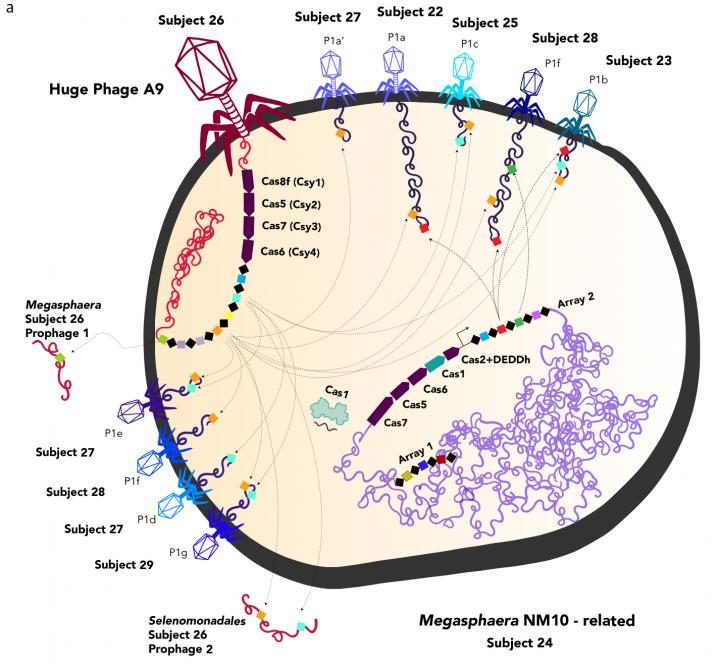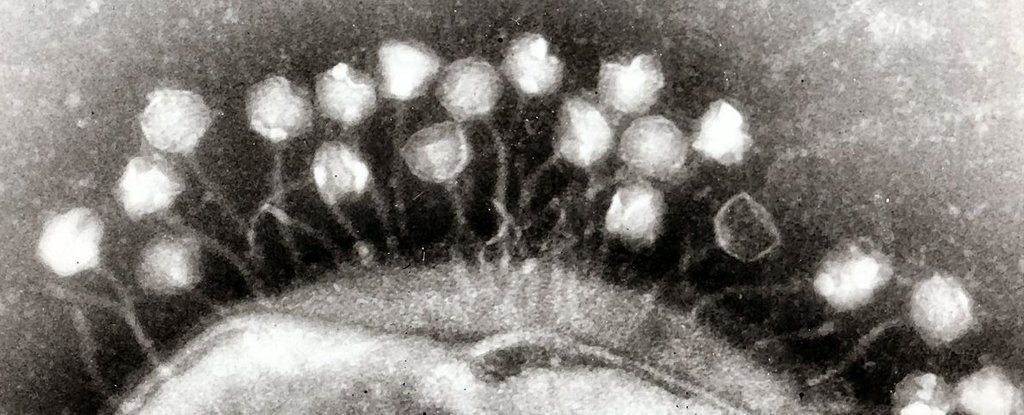The international team, led by scientists from University of California, Berkeley, has discovered entire new groups of giant phages (viruses that infect bacteria) and pieced together 351 gene sequences.
Within these they found genes that code for unexpected things, including bits of the cellular machinery that reads and executes DNA instructions to build proteins, also known as translation.
"They have an unusual number of components of the translation machinery that you do not find on a typical virus," microbiologists Basem Al-Shayeb and Jill Banfield from UC Berkeley told ScienceAlert.
The translation process takes place in molecular structures known as ribosomes, and the researchers actually found genes that code for some of their components - ribosomal proteins.
"Typically, what separates life from non-life is to have ribosomes and the ability to do translation; that is one of the major defining features that separates viruses and bacteria, non-life and life," said microbial ecologist Rohan Sachdeva from UC Berkeley.
"Some large phages have a lot of this translational machinery, so they are blurring the line a bit."
The team also found sequences for CRISPR systems, which also happens to be the 'immune system' bacteria use against viruses, the very same system we humans have co-opted for our own gene manipulation purposes.
The newly discovered viruses all have genomes more than 200,000 base pairs long, whereas the average known phage size is more along the lines of 52,000 base pairs.
Some phage genomes identified by the team were true whoppers; the researchers have named one group Whopperphage, and designated the other nine new groups after the word "big" in the different languages of the contributing authors.
"The genomes of these phages are at least four times the size of a typical phage, and the largest is 15 times larger - 735,000 bases of DNA," Al-Shayeb and Banfield said.
These larger phages are thought to infect Bacteroidetes, a group of bacteria widely dispersed in our environment, from soil to our intestines.
The genomes of these hefty phages are large enough to rival those of small bacteria, but the amoeba-infecting pandoraviruses still hold the title of the largest viral genome at 2.5 million base pairs.
"Large phages have been found before, but they were spot findings," Sachdeva told the Innovative Genomics Institute. "What we found in this paper is they are essentially ubiquitous. We find them everywhere."
Like other phages, these chonkers inject their DNA into their bacterial host, hijacking the victim's gene replication equipment to make copies of themselves.
The researchers suspect that while this is happening, the giants also use some of their additional genes to derail early stages of translation inside the bacteria, and divert protein production to suit their own needs. Such control of protein creation has also been observed in animal viruses.
Al-Shayeb explained that giant phages use their CRISPR system for phage-on-phage warfare, by specifically targeting competing viruses that try to infect the same host bacterium. A study from last year shows how some phages use this system to thwart anti-phage measures their host bacteria may deploy.

As we learn more about the links between our physical and mental health and the microbes we share our bodies and environments with, it is clear that what affects them can also profoundly impact us.
"Phages are also known to transfer genes for bacterial toxins and antibiotic resistance between bacteria, which contribute to disease," Al-Shayeb said.
"Since we have both harmful and useful bacteria living on us and within us, understanding what kinds of phages coexist with them in humans and animals and how they affect those environments is of great value."
The researchers suggest that the interesting CRISPR systems some of these phages possess may have the potential to help us control our own microbiomes, by altering the function of bacteria or eliminating the troublesome ones.
They now hope to grow some of these whopper phages in the lab, to learn more about these phage-associated CRISPR systems and "discover their roles and test for value in genome editing", according to Al-Shayeb and Banfield.
Biochemist Christoph Weigel, who was not associated with the study, suggested on Twitter that the paper provides "strong support" for considering viruses living "virocells".
"These huge phages bridge the gap between non-living bacteriophages, on the one hand, and bacteria and Archaea," explained Banfield.
"There definitely seem to be successful strategies of existence that are hybrids between what we think of as traditional viruses and traditional living organisms."
Whatever else this huge addition to our knowledge of viral biodiversity brings, it's already sparking further discussion on what it means to be alive.
This study was published in Nature.




Reader Comments
to our Newsletter